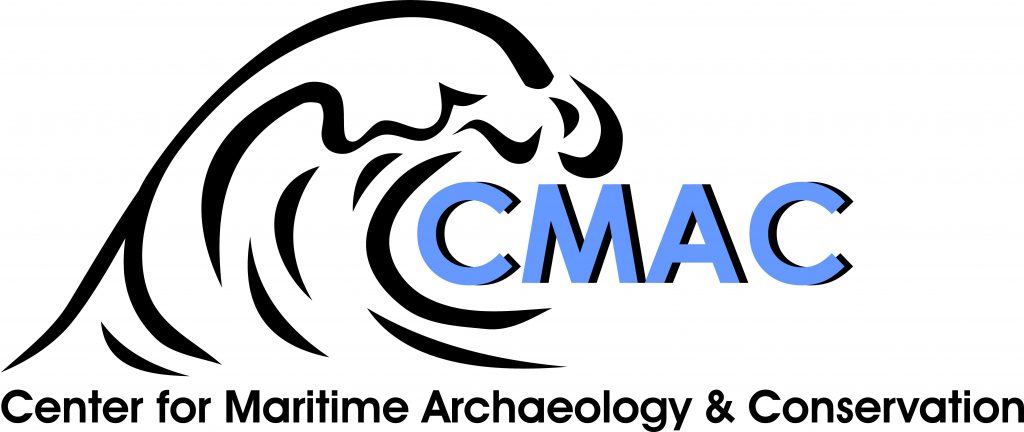CMAC Mission

CMAC Mission
1. Build on and continue the research relationship with the Institute of Nautical Archaeology (INA).
2. Strengthen the position of the Nautical Archaeology Program (NAP) of the Department of Anthropology as the leader in teaching nautical archaeology and conducting research on the most archaeologically significant shipwreck and other underwater sites around the world.
3. Increase the level of archaeological research and publications in both the Old World and New World. Develop the Studies in Nautical Archaeology Series published by Texas A&M University Press as the premier nautical archaeology series in the world.
4. Conduct interdisciplinary research involving colleagues at TAMU, particularly in the Department of Oceanography and at other universities. Increase the visibility of the Center, the Program, the Department, and the University by creating an on-going dialogue by means of nautical archaeology and maritime history conferences, lectures, and colloquia among nationally and internationally recognized scholars.
5. Increase the visibility of CMAC by maintaining an extensive Internet presence and participating in documentaries publicizing the joint CMAC/INA/Oceanography archaeological projects.
6. Continue to develop the expertise of the conservation laboratories and perform essential conservation services not available anywhere else.
7. Continue to build on the strengths of the nautical archaeology laboratories and participate in contract arrangements with other archaeological projects.
8. Establish an endowment to support the Center.
9. Secure public and private grants to support CMAC research.
10. Provide field opportunities and on-the-job conservation training for graduate students in NAP.
11. Continue to develop a program of deepwater archaeological research and advanced technology for underwater mapping and surveying in concert with the Department of Oceanography.
The physical resources of Texas A&M University provide an ideal environment to create interdisciplinary research, education, and outreach programs. In addition, the leadership role provided by the Center will extend beyond the academic confines of Texas A&M University. The Center will provide direction and coordination to scholars worldwide whose research is related to nautical archaeology, maritime archaeology, underwater archaeology, or conservation of material recovered from marine or other aqueous environments. The Center will play a leading role in disseminating the nautical archaeology research results nationally and internationally to both scientists and the public through the Studies in Nautical Archaeology Series published by Texas A&M University Press, and other journal publications and its Internet presence.
The establishment of the Center for Maritime Archaeology and Conservation at Texas A&M University will produce significant benefits. There is no other research center with our combined conservation and Old World – New World nautical archaeology focus. The Center will help raise the ranking and the caliber of students applying to the graduate programs of the Department of Anthropology. The Center will create and foster collaboration among NAP, Anthropology, INA, and other research units at the University. The mission of CMAC meshes well with the strengths of the Department in archaeology and conservation. The research conducted by CMAC will be published in the highly acclaimed Studies in Nautical Archaeology Series of Texas A&M University Press as well as other nationally recognized presses and journals. CMAC will host conferences and workshops on topics relating to artifact conservation and nautical, maritime, and underwater archaeology. The conferences will bring recognized scholars to campus, further enhancing the visibility of the Department, the College, and the University.
The field research program envisioned for CMAC, in coordination with INA, spans the world. The majority of the excavations in the Old World over the past two decades have been conducted in Turkish waters in the Mediterranean. INA maintains in Bodrum, Turkey, a permanent research center with dorms, conservation facilities, and a library, along with a research fleet that includes a manned submersible, an extensive array of diving equipment, and remote sensing gear. Other INA supported research in the Old World has taken place in Italy, Cyprus, Greece, Egypt, and Malta.
In the New World, joint excavations have been conducted at the 17th-century, sunken city of Port Royal Jamaica, in the Caribbean, Lake Champlain, and sundry other places, including Bermuda, Virginia, New York, Maine, Texas, and most recently, Oklahoma.
CMAC will significantly strengthen the image and profile of the Nautical Archaeology Program at Texas A&M University. The Center for Maritime Archaeology and Conservation will provide the administrative structure to coordinate the maritime archaeology research objectives of TAMU with INA and to emphasize our image and strengths in conservation, and to administer the activities of the different nautical archaeology laboratories that are an integral part of CMAC. Through CMAC, more opportunities will be created to conduct significant research and raise endowments to support the Center. The mission to search for the history of civilization by fostering excellence in underwater archaeology and conserving the recovered cultural remains is enhanced by CMAC.
